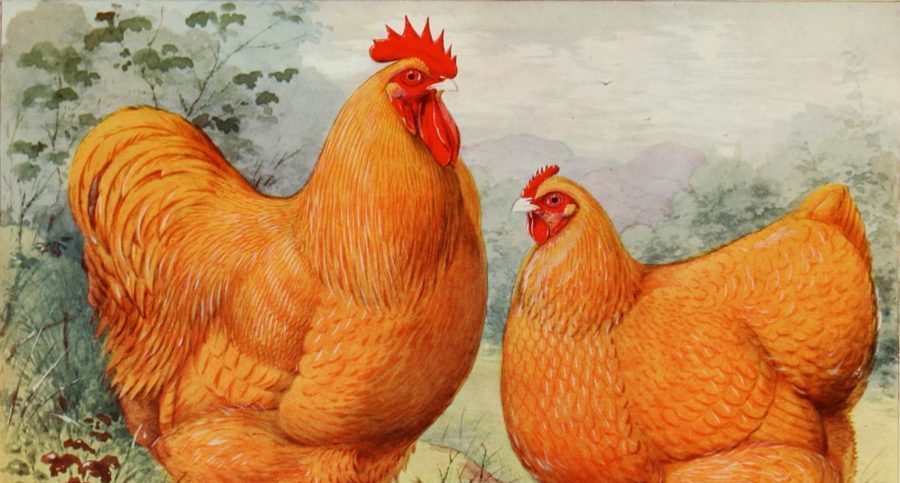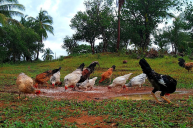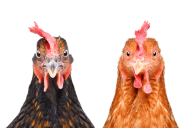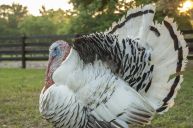The American Livestock Conservancy lists three dozen heritage chicken breeds in danger of disappearing. Is a heritage chicken breed right for your flock?
First, what exactly is a heritage chicken breed? Heritage chickens are heirloom breeds, and some of them are actually in danger of disappearing entirely.
Any standard breed recognized by the American Poultry Association (APA) in the first part of the 20th century that can mate naturally, has a long and productive outdoor lifespan, and a slow growth rate is considered a heritage chicken.
This may sound odd (slow growing? mate naturally? what!?) but some modern breeds grow so fast they sometimes can't stand up after they reach market weight, or they can't reproduce on their own. Which is why heritage birds are worth keeping around.
Here's why you may want to consider a heritage breed when you add to your backyard chicken flock.
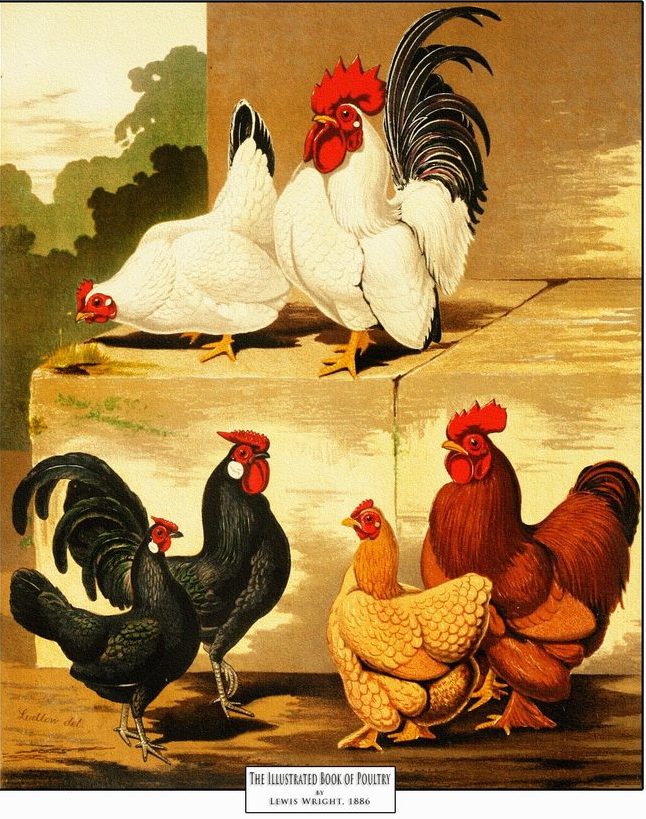
Image from The Illustrated Book of Poultry, image via The Old Fern
1. Heritage chickens have fancy feathers and beautiful eggs.
Many heritage chickens are beautiful. Who doesn't love a fancy or rare chicken? A mop head like the Polish chicken, the lacing of a Wyandotte, or the barring of a Dominique or a barred Plymouth Rock are all unique features that are technically of heritage chickens.
With a heritage breed, you are more likely to find rare birds, fancy feathers, and different shades of eggs. From the peachy brown egg of a Plymouth Rock to the purplish plum of a Langshan egg, heritage breed eggs are beautiful. The diversity of eggs and flock appearance in heritage birds is a reminder of diverse genetics of different breeds worth preserving.
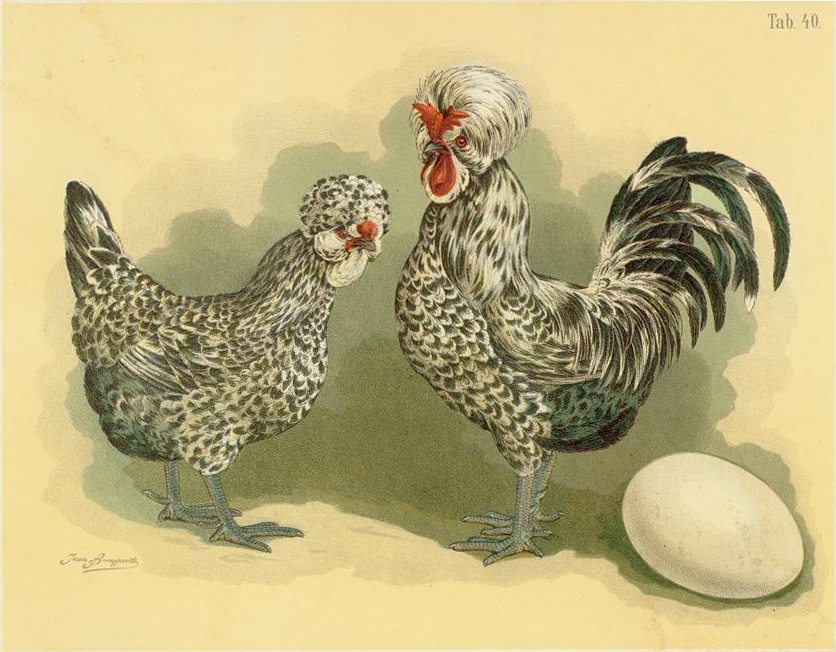
Heritage chicken known as the Houdan, illustration from the Geflügel-Album of Jean Bungartz, 1885, via Wikipedia
2. Heritage chickens are hardy & adapted to your specific climate.
A non-heritage chicken developed for the United States poultry industry does well in a moderate climate (or a climate-controlled barn). This chicken will never be able to match the hardiness of heritage chickens bred to withstand cold winters and hot summers.
As an example, the New Hampshire breed is acclimated to cold New Hampshire winters, while the Buttercup breed can handle the South's steamy summers. A breed like the Ancona lays eggs through the winter and does well in heat and freezing temperatures.
Heritage chickens were not "rare breeds" once upon a time. These birds were bred specifically to live outdoors rather than in a climate-controlled barn. Heritage chickens have a productive outdoor life and return to a safe coop at night.

The Plymouth Barred Rock is considered a heritage breed. Photo credit: Daphne Cybele.
3. Heritage flocks are better at foraging.
Old-fashioned farmyard flocks ranged over the entire farm. Chickens who knew how to spot and gobble all the tasty bugs and healthy greens thrived and flourished. This foraging trait was passed down genetically in most heritage breeds.
As a result, you are more likely to have a heritage flock with excellent foraging ability. Foraging will definitely lower your chicken feed bill during the spring and summer! It will also keep your yard insect and pest-free.
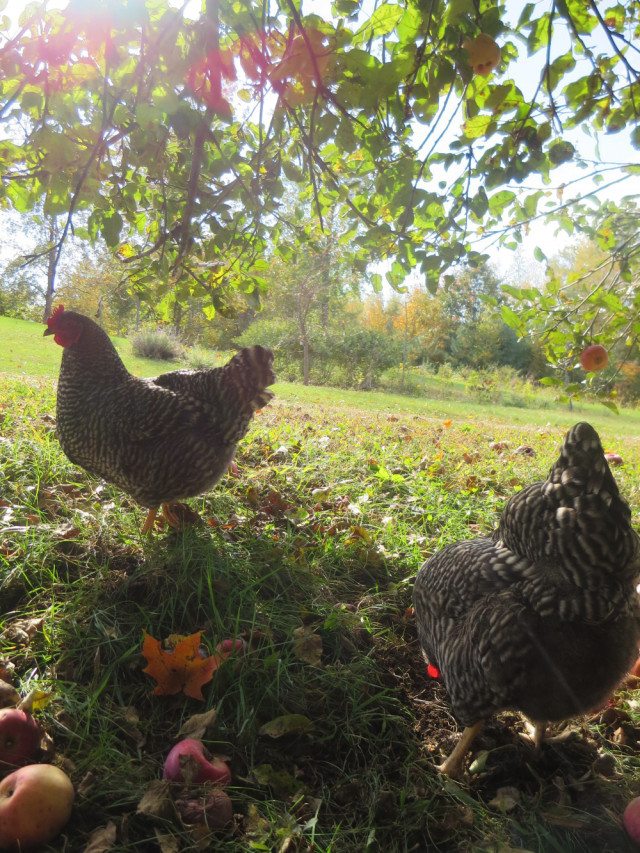
Barred Plymouth Rocks foraging. Photo credit: Daphne Cybele
4. With a heritage flock, you might get broody hens.
A broody hen is an excellent way to increase your flock. The broodiness trait is not desirable for egg production, so broodiness is no longer common with the common chicken.
If you have any interest in hatching chicks or increasing your flock, you know the value of a broody hen and heritage breeds tend to have more maternal traits.
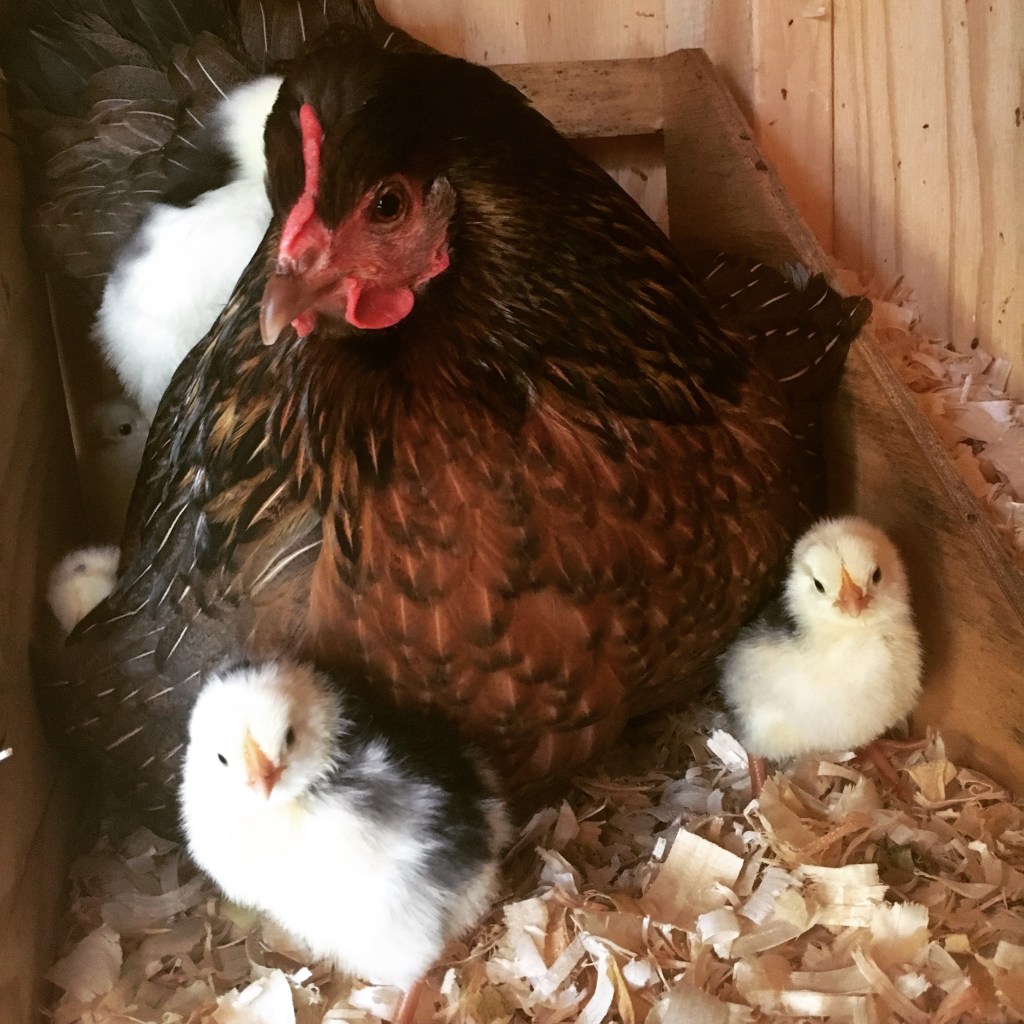
Just hatched chicks with their broody hen mama. Photo credit: Daphne Cybele
5. Heritage chickens are versatile.
Heritage breeds such as the Plymouth Rock and the Java (the Java is one of the oldest breeds in the USA) have meaty bodies as well as excellent egg production. This is known as a dual-purpose chicken.
Not all heritage breeds are dual-purpose breeds, some are exclusively for meat or egg production. However, it's nice to have the option of a versatile flock that could do both in a pinch!

Illustration from The Illustrated Book of Poultry via Kottke.org
6. There is a need to preserve the diverse genetics of chickens in America and elsewhere.
In conclusion, these birds are cultural treasures. The preservation of many different heritage breeds is possible because of the interest of home and hobby flocks, as well as professional breeding programs.
We can preserve potentially valuable heritage traits (like the ability to forage, or to adapt to cold or heat). We cannot foresee the qualities we may need in future generations of egg layers and for meat production. Should we restrict future generations to the handful of breeds that are widely used in modern food production?
Would you like to know more about heritage chickens? Find a list of breeds at The Livestock Breed Conservancy, and find a bird that suits your climate. There are many choices: the silver laced Wyandotte, the Jersey Giant, the Buckeye, the golden-penciled Hamburg, the Sussex, the Orpington, the Delaware, the Cochin, the Minorca, the Java, the Ancona, the barred Plymouth Rock, and so many more.
Heritage chickens may be your ideal flock!
Do you think heritage breeds are worth saving? Let us know in the comments below!
READ MORE: The Ultimate Checklist to Have the Best Chicken Coop in All the Land
WATCH NOW: Silkie Chickens Are Fluffy!
